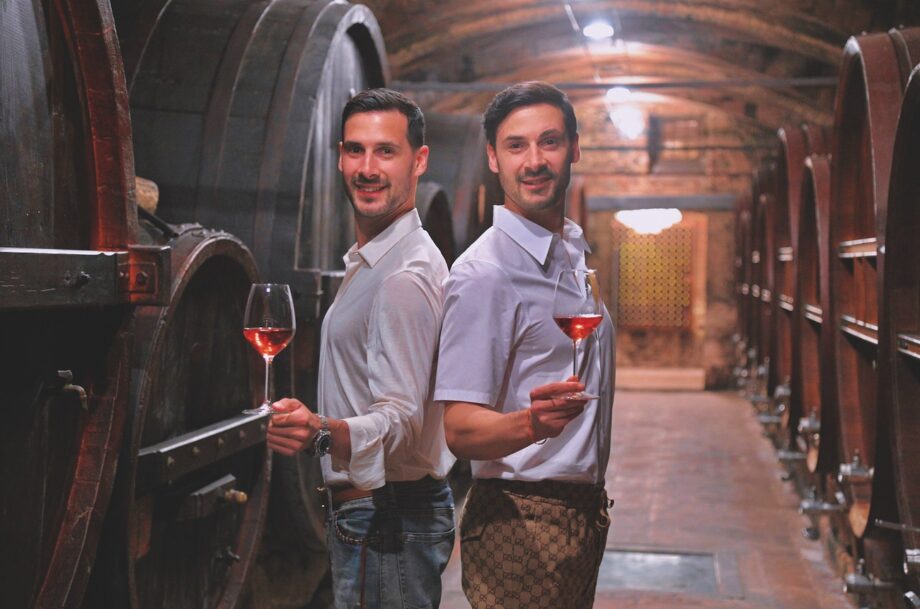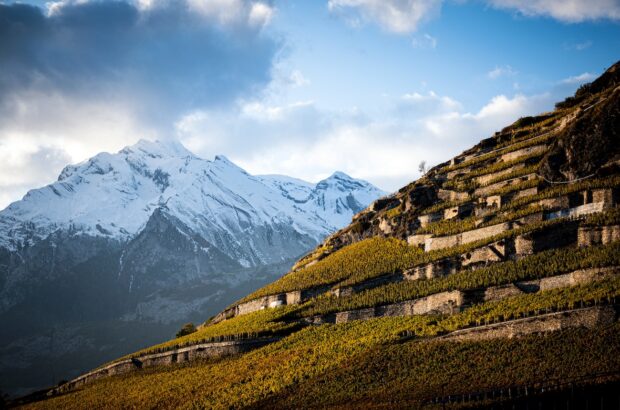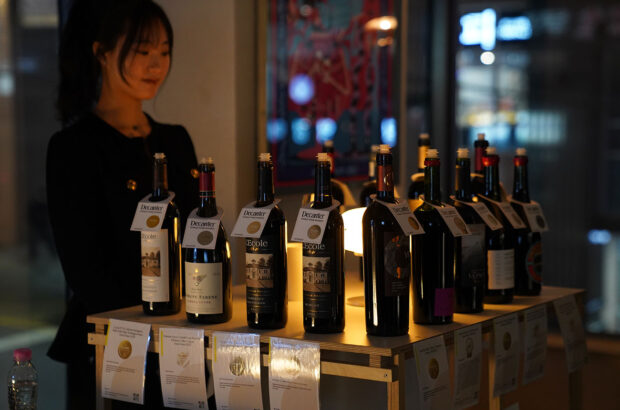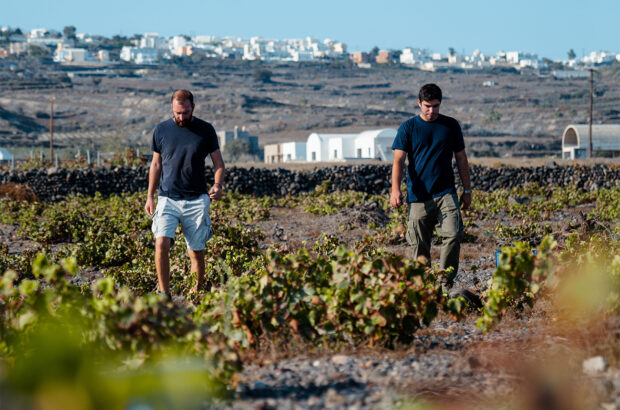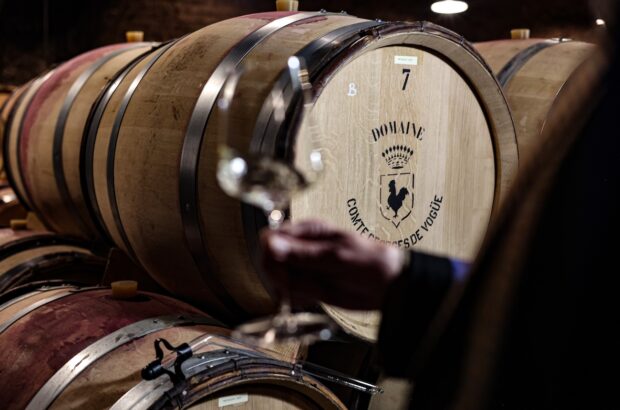Born in a village near Perugia in Umbria, twin brothers Augusto and Alberto Gherardi head up the prestigious education programme at the Gordon Ramsay Restaurants group, and run their own wine communication business, The Wine Jokers, studying for the Master of Wine qualification in their spare time. Winners of the 2025 Sommelier Edit Excellence in Education award, the unstoppable pair took time out to speak to Decanter about their own journey and what’s hot on the Umbrian wine scene.
Alberto: ‘We don’t come from a wine background. Our family is in fashion – they have their own brand, Alessandro Gherardi, and also work for labels such as Ferragamo, Dior and Louis Vuitton. So many people are surprised when we tell them we decided to follow a completely different path. We started from scratch.’
Augusto: ‘Wine has always been an important part of our lives, though, with classic Italian family meals around the table. Growing up, our grandmother introduced us to the world of (often bretty!) diluted wine – that’s also why we both still love a tiny bit of brett in wine!’
Augusto: ‘In our work as wine education managers, we run WSET courses (Levels 1-3) for staff and for the public, and the company has also just opened a site at 22 Bishopsgate, London, that focuses more on cooking classes, corporate masterclasses and events. It was great to win the award for Excellence in Education – it’s a reminder we’re going in the right direction.’
Augusto: ‘I think it was our curiosity and willingness to expand our horizons in the world of wine that brought us to London. [The brothers interned as sommeliers for the opening of five-star boutique hotel The Londoner.] We believe that this city is still the most dynamic market in the world for wine. In just one shop here, we were able to select 90 wines for our MW exam preparation – in Italy, this would have required months of research.’
Alberto: ‘We share tips for facing the challenges [of the MW programme]. We make the most out of this bond that we have… we always have a partner to study with, which is important. It’s like playing tennis: one of the biggest challenges is finding a person to play with – we don’t have that challenge!’
Augusto: ‘What makes Umbrian wines distinct is our indigenous grape varieties and the fact that Umbrian winemakers are following more organic, natural and sustainable practices. Some extraordinary orange wines from Trebbiano Spoletino are being made, and producers are seeking greater freshness and lower alcohol levels while looking to alternative vessels such as concrete and clay eggs.’
Alberto: ‘Umbria needs to move away from the misconception that it is simply a “cheaper Tuscany” and create its own identity, focusing on making Sagrantino more approachable and earlier-drinking. Another central selling point for Umbria is its lakes: our lake fish pairs well with Grechetto- and Trebbiano Spoletino-based whites. Wine alone is powerful, but if combined with unique regional traditions, it can really make a splash in the market.’
Augusto: ‘My perfect regional wine and food pairing? Strangozzi pasta with butter and white truffle (many of the best actually come from Umbria), served with the Cardissa Chardonnay from boutique winery Morami. It’s well balanced and made in a rich, creamy Burgundian style, with some new oak fermentation and maturation. It’s perfect with the intensely aromatic white truffle and the buttery character of the strangozzi.’
Alberto: ‘I’d go for a very traditional Umbrian Easter dish: grilled lamb with Montefalco Sagrantino Passito DOCG from Paolo Bea – a very good artisanal producer. The lamb has enough structure to match the wine’s glycerin viscosity and waxy texture. The passito style’s residual sugar counterbalances the lamb’s earthy flavour and the smoky, charcoal character.’
Alberto: ‘Beyond Umbria, I believe Lambrusco is very exciting. It ticks all the boxes for market trends and Generation Z’s preferences: bubbles, rosé styles and lower alcohol. Some producers are also focusing on premiumisation: Cantina della Volta is great for bottle-fermented styles.’
Augusto: ‘The Valle d’Aosta in Italy’s Alpine far northwest is one to watch. It has a similarly continental climate to Umbria [and produces] authentic, terroir-driven wines – exciting things happen at high elevation. There’s lots of freshness, vibrancy and fragrant notes in the wines. There is great value and versatility to be found.’


